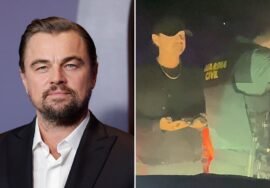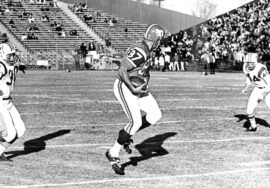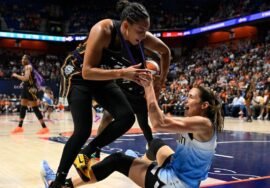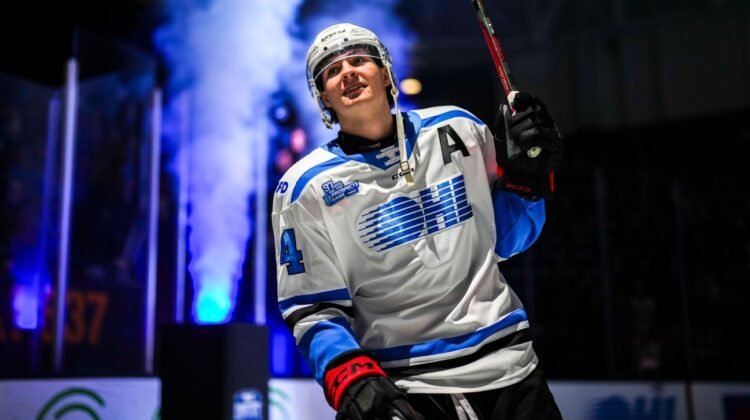
2025 NHL mock draft: Final predictions for the top 32 picks
The first round of the NHL draft is Friday night in Los Angeles, and for the first time, team personnel will not be centralized. No one will be reporting on who visited whose table, who was seen speaking in the dark corners of a tunnel or who is walking over to central registry. But the players will be in attendance, which should make for interesting draft photos.
Apart from Matthew Schaefer and Michael Misa, there is a ton of intrigue in this year’s draft class. There is no consensus after the top two, and there is good reason to believe we will see a ton of pick shuffling as early as the first round. With such volatility across draft boards, teams might want to move up or down depending on who is available, and teams with multiple first-round picks might raise eyebrows with their selections.
For the final mock draft, we will assume the selections will stay with their teams, but there will be mention of who might be selected if the pick is traded. For instance, it sure seems as if the Columbus Blue Jackets, Utah Mammoth, Boston Bruins and Vancouver Canucks could move their first-round selections for more immediate help, and those considerations will be made.
In a mock draft, it isn’t about which player is the best, it is about how the team drafting perceives the players available — and who they are most likely to select. In other words, this isn’t an exercise of “who would I pick if I were GM” as much as it is an exercise of “who is most likely to be selected if the pick isn’t traded.”
With that out of the way, here’s the final projection of the first 32 picks:
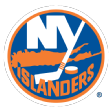
This is not rocket science and no one needs to overthink this. The James Hagens story — his being a Long Island native, and an Islanders fan — is a great one, and we will address that later, but Schaefer is the clear-cut best player available in this draft.
Many scouts believe he will become a franchise cornerstone defenseman capable of driving play at both ends of the ice. The Islanders are in a precarious position on defense with Noah Dobson and Alexander Romanov in need of new contracts. Neither of those players will sign low-priced deals, and both have been rumored in trade discussions. Given that, the Isles clearly view Schaefer as the defenseman of the future. Should they elect to keep Dobson, the incoming Schaefer would allow the elder to slide into a role more suited to him and remove some of the heavy lifting.
Schaefer lost nearly his entire draft year to injury, and would almost certainly benefit from a year in the NCAA to continue developing. That seems unlikely. But even without that, the Isles can safely project him to step into their lineup in a significant role as a rookie. It wouldn’t surprise anyone to see Schaefer running the power play, logging top-four minutes and becoming a staple on the Isles’ back end before snow hits the ground this season.
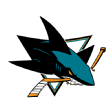
2. San Jose Sharks
Michael Misa, F, Saginaw (OHL)
There seems to be some intrigue surrounding the Sharks heading into draft weekend, as they have a clear need on defense and are also believed to like Anton Frondell (a center). But passing on a talent such as Misa for any reason would be ill-advised. The gap between Schaefer and Misa exists, but the gap between Misa and the next tier is even larger.
Adding a dual-threat offensive dynamo with above-average two-way play to a young lineup that already has Macklin Celebrini and Will Smith is very exciting. Misa can play center or wing, but his two-way play is more valuable at center, and would give the Sharks a significant one-two punch for years to come. A top-six group that includes Celebrini, Will Smith, William Eklund and Misa — who are all 22 or younger — sets up the Sharks with a formidable attack and reliable two-way play drivers in the middle of the ice for years to come.
Misa brings dynamic scoring ability, excellent speed, and elite hockey sense to combine with a never-quit style. It’s not out of the question that he steps into the lineup this season and has a similar impact to what Celebrini did as a rookie in 2024-25 because he’s such a complete player, with professional habits all over the ice.

3. Chicago Blackhawks
Anton Frondell, F, Djurgardens (Allsvenskan)
This is where things start to get very interesting.
It is rumored that Chicago could move this pick, but if it doesn’t, Frondell or Porter Martone seem to be the most likely selections. Hagens would be the best available, but it seems as if Chicago wants a more sizable player to pair with Connor Bedard.
In this scenario, Chicago hopes Frondell can slot into the lineup behind Bedard and provide two-way value with an elite shot release and the ability to find open space to get his shot off. Frondell would benefit from another development season outside the NHL before making the jump to become a more well-rounded play driver.
When he’s ready, the Hawks can slot Frondell across from Bedard on the power play and have two players with elite release on their flanks. Ideally, Frondell drives a second line as a powerful two-way center and gives Chicago a formidable one-two punch for years to come.

4. Utah Mammoth
Brady Martin, F, Sault Ste. Marie (OHL)
There is a very real chance Utah doesn’t make this selection and trades the pick. If it does, I expect Hagens to be the selection by the acquiring team. But Utah has made it known it wants hard skill, and there are two players who fit that bill: Caleb Desnoyers and Brady Martin. Both are legitimate possibilities for the Mammoth, who want to add some beef to a top six that has Clayton Keller, Logan Cooley and Dylan Guenther.
It is no secret that Martin is high on Utah’s list, and he cemented that status by making an excellent impression when he met with Mammoth brass at the scouting combine. The farm boy has lots of teams after him, including the Flyers and Bruins. Some believe he could be a Sam Bennett type of player who produces well below a point per game in the regular season but is a “mammoth” in the playoffs. Utah believes it needs some jam at the top of its lineup, and no one this high has more jam than Martin.

No team has scouted Martone more heavily than Nashville, and upper management was in the rink to see him on more than a few occasions. Martone might have the best hockey sense and vision in the draft class, and is also in the conversation for best puck skill. Tacking on an elite shot with his playmaking and you’ve got a 6-foot-3 forward with both hard and soft skill — and a sky-high ceiling.
He might not be Mikko Rantanen, but Rantanen is his second-closest comparable in my model, along with Cole Caufield — in terms of NHL potential, not size (obviously).
If you’re Preds GM Barry Trotz, you ask Martone to develop his physical game to become an imposing force and the makings of a dual-threat forward who will be a lot for opponents to handle. If they don’t take Martone, Trotz has been clear he values upside and skill. If he really wants to do that, Hagens feels like the guy. But there’s a sneaky hunch that Nashville could acquire an NHL player and more from the Isles in exchange for this selection if Hagens is available.

6. Philadelphia Flyers
James Hagens, F, Boston College (NCAA)
The Flyers need centers more than anything, and if Hagens falls into their lap at No. 6, they need to follow suit with their Matvei Michkov approach and take the kid who had no business being available to them. The possibility of adding Michkov and Hagens to their top line without drafting in the top five in those years would be astronomically valuable to the organization.
Hagens would immediately become the Flyers’ best prospect at center, and the team doesn’t need to rush him through school with Sean Couturier, Noah Cates and newly acquired Trevor Zegras already on the NHL roster. When he’s ready, Hagens can step in to provide a jolt of offense the Flyers sorely need. His speed, puck skill and excellent playmaking ability will fit nicely beside Michkov, especially if he regains his play-driving ability in another season at Boston College. The details of his game will allow him to earn the coach’s trust and become a staple of the Flyers’ offense for years to come.
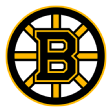
7. Boston Bruins
Caleb Desnoyers, F, Moncton (QMJHL)
Another pick that could be on the move, but if the Bruins make this pick, Desnoyers would be a perfect fit for the organization. A French Canadian two-way center with excellent shutdown ability, and a clutch producer and leader in a Bruins uniform should sound pretty familiar to Bruins fans.
Desnoyers is a serial winner, and he plays his best when the games matter the most. He’s excellent in the tough areas, is a deft playmaker and has high-end hockey sense. His defensive game is already NHL-ready, and if he can improve his speed, the Bruins will have a legitimate offensive threat capable of handling tough matchups in key situations.

8. Seattle Kraken
Jake O’Brien, F, Brantford (OHL)
There’s a consensus group of six at the top of the draft after Schaefer and Misa, and Seattle probably takes whomever is left from that group. But the Kraken need a defenseman, and I could see them trading back a few spots to the range of Radim Mrtka and Jackson Smith.
If they stay at No. 8, I think O’Brien is the pick, unless they opt for Roger McQueen. Seattle is one of the deepest teams when it comes to young centers with Matty Beniers, Shane Wright and Berkly Catton all age 22 or younger. O’Brien is a high-end talent and might allow the Kraken to move Catton to the wing in the top six.
O’Brien brings more high-end playmaking than Wright and Beniers, and will have time to physically mature and add speed to hit his ceiling as a playmaking top-six center. He should become a playmaking force who quarterbacks the power play and makes his wingers a lot of money.
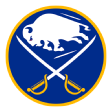
9. Buffalo Sabres
Radim Mrtka, D, Seattle (WHL)
The Sabres have a decent prospect pool, but the organization really needs high-end center and right-handed defensive prospects. Both Mrtka and McQueen should be available to them here, but it feels as if the big defenseman is their guy.
The 6-6, right-handed defenseman has projectable mobility and quality transition defending, and could be the perfect partner for Rasmus Dahlin or Owen Power. Adding Mrtka gives the Sabres another quality defenseman with projectable shutdown ability as the organization looks to end the NHL’s longest playoff drought.

10. Anaheim Ducks
Roger McQueen, F, Brandon (WHL)
The Ducks could very well trade this pick for current NHL help; GM Pat Verbeek already has been quite active this offseason. But if not, taking a towering center who is a top-five talent in the draft makes a lot of sense.
The Ducks took McQueen out to dinner at the combine, and appear to have done a significant amount of homework on his back injury. If the Ducks believe it won’t be an issue moving forward, adding a powerful 6-5 center who has the potential to be a dominant two-way force is a no-brainer. The only limit on McQueen’s ceiling is his body’s willingness to hold up. If it does, we’re talking about a player who could end up as the one of the best to come out of the draft class. That is worth the swing for the Ducks.
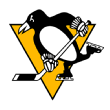
Holding two picks back to back, the Penguins might very well try to move up to nab an elite prospect — their pick value combined is nearly identical to the No. 3 pick, so moving up is probably not entirely out of the question. Failing that, the Penguins have an opportunity to add two significant players to their pipeline.
If McQueen is available, I think they take a long look. But adding Smith to their blue-line depth would be tidy business for the Penguins, who currently have Owen Pickering and Harrison Brunicke there. Smith is big, physical and has legitimate offensive upside. He should be capable of playing in a matchup role and driving offense from the back end. He’s poised with the puck and will be close to Penguins brass while he attends Penn State.
There’s a lot to like about the package Smith brings and the Penguins could use a player with his blend of size, skating, poise and offensive upside.

The Penguins land another top-10 talent here with Eklund. Carter Bear and Lynden Lakovic will also be options given that both have outstanding offensive talent.
But as for Eklund, he plays a style that translates well to the NHL and has the potential to produce 70-plus points in a top-line role. His excellent forechecking ability, willingness to engage physically, fearlessness driving to the middle of the ice and two-way play give him the tools to be a Seth Jarvis type of player.
He’ll probably be NHL-ready sooner than later, and for a team with as many veterans as the Penguins, that matters. Having Eklund learn from the future Hall of Famers in the twilight of their career could have a lasting developmental impact that vaults Eklund toward his ceiling as a first-line engine.

The Red Wings have a type, and luckily for them, a few players in their range fit the bill: Bear, Eklund and Justin Carbonneau. At least two, if not all three, could be available at this spot.
Bear’s elite instincts and playmaking ability are attractive to many teams, including Detroit. Combined with one of the best competitive engines in the draft class, Bear has all the hallmarks of a play-driving winger with reliable two-way play, similar to Zach Hyman.
The Red Wings have some quality young centers, and Bear’s blend of playmaking and net-front finishing ability could see him become a power-play operator and offensive facilitator. He’d be an excellent fit for the Red Wings as a projectable top-six contributor.
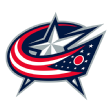
There’s a distinct possibility that Columbus trades this pick for immediate help. But if it doesn’t, this feels like the floor for Aitcheson, given the Blue Jackets’ need to add defenseman.
Though Logan Hensler is likely to be a consideration here — and they do like him a lot — there are only a few scenarios that Aitcheson gets to the Jackets’ second pick at No. 20, so it makes sense they’d take him here.
In Aitcheson, Blue Jackets are adding a raw defenseman who could become a menacing nightmare to play against while providing two-way value. As one of the more raw prospects, Aitcheson needs time to develop, but there is every reason to believe in his skill set to become a middle-pair defenseman who is difficult to play against, particularly in the postseason.
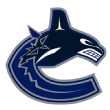
15. Vancouver Canucks
Braeden Cootes, F, Seattle (WHL)
In what is probably the worst-kept secret in the hockey world, Vancouver is after a center. The Canucks took Cootes to dinner at the combine, have scouted him heavily throughout the season and were very impressed by how he handled himself throughout the combine process. Jack Nesbitt could find himself here because the Canucks love their centers with size, but Cootes and Cole Reschny have higher ceilings.
Cootes should become a middle-six center with reliable two-way ability, excellent off-puck instincts and produce 55 to 65 points each season. If Aitcheson is available, they might not be able to resist the big, menacing defenseman.
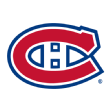
The Canadiens have a dynamic offensive presence on their blue line in Calder Trophy winner Lane Hutson, and Reid could be a perfect partner for him. Montreal brass scouted Reid heavily this season, and have many believing it will target him with one of the team’s two first-round selections. The Canadiens are another team that could take Aitcheson, but Reid’s ability to drive play through excellent skating ability and sound decision-making is hard to pass up.
He has the tools to become a solid top-four defenseman, and doesn’t need to overextend himself on offense to provide value. He’s less risky than some of the other available defenseman, with projectable offense and excellent mobility to boost his transition value.

17. Montreal Canadiens
Justin Carbonneau, F, Blainville-Boisbriand (QMJHL)
I have Carbonneau higher on my personal board than most because I believe he has sky-high potential as a power forward. With Juraj Slafkovsky already in the fold, the Habs need some more size to complement Nick Suzuki, Cole Caufield and Ivan Demidov.
Carbonneau has the potential to become a dual-threat forward in a top-six role, with high-end creativity. If everything clicks and his decision-making improves, there’s a chance Carbonneau becomes a powerful, play-driving forward. The Habs’ development staff is robust and has done excellent work. Given Carbonneau’s upside, which is significant, he is more than worth the swing for the hometown team.
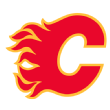
Calgary needs some depth at center in its prospect pool, and Reschny is good value in this range. He’s a quality playmaker who facilitates offense, and has the best hockey sense of the centers in this range. He doesn’t come with size and will need to play on the inside of the ice to hit his potential of a second-line center, but the offensive tools are there.
The details of his game are nearly NHL-ready, with good battle success, connective play and forechecking. There’s potential to become a dual-threat playmaker and shooter, which is something the Flames covet.
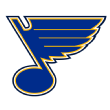
19. St. Louis Blues
Jack Nesbitt, F, Windsor (OHL)
The Blues have used a lot of their best draft capital on defense, and the pressing need for centers in the pipeline can’t be ignored.
Nesbitt has received a lot of love from executives since the scouting combine, and could slide into the top 20. The big center is likely to top out as a third-line, two-way checker but could see elevated offensive potential if he adds speed. At 6-4, he brings size, strength, physicality and the ability to shut down opponents. That is attractive to many teams, including the Blues.

It’s not out of the question that the Blue Jackets take another defenseman with their second first-round pick, and I think it’s more likely than not. Lynden Lakovic would be a strong consideration if he’s available, but Hensler is someone the Columbus brass highly covets.
He’s a quality neutral-zone and transition defender because of his excellent mobility, allowing him to make proactive contact and keep a tight gap. The right-shot defender could become a quality No. 2 or 3 defenseman if he hits his ceiling and continues to develop his offensive game.
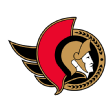
21. Ottawa Senators
Lynden Lakovic, F, Moose Jaw (WHL)
Lakovic makes a ton of sense for the Sens. Management seems to really like the big, dual-threat winger with untapped physical potential. He’s smart, moves very well for his 6-4 frame, and should have chemistry in the top six, regardless of which center he plays with.
If Lakovic can develop his physicality, the Sens have a legitimate dual-threat scorer with a power game who should be a difference-maker.

The freight train on skates is gaining a full head of steam heading into Friday night’s first round, and the consensus is that a lot of teams love his style of play and believe he’ll go in the early 20s. Teams with multiple first-round selections tend to take swings with their picks, and Prokhorov is certainly one.
The Flyers are likely to take a big swing with at least one of their firsts, and a sizable, violently physical kid who has raw offensive abilities that can translate into a power forward is exactly the kind of talent someone like new head coach Rick Tocchet would be very excited to develop.

Given where the Predators are selecting at fifth and 23rd, it is highly likely they take a forward at No. 5, if they don’t trade the pick. But given that their pipeline is thin on defense, Boumedienne makes a lot of sense for them here.
Trotz likes to swing on upside, and Boumedienne has the most upside of the defensemen in this range. He has legitimate offensive upside, is an effective breakout passer and is capable of playing a two-way transition game on a second pair. If Logan Hensler is available, he would be a major consideration, and Blake Fiddler is probably in the conversation as well, although the first two are the higher-upside options.
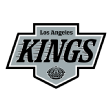
24. Los Angeles Kings
Blake Fiddler, D, Edmonton (WHL)
As noted in my prospect pool needs story, the Kings have almost nothing in the defensive prospect cupboard. Luckily for them, a 6-5 right-handed defenseman with NHL bloodlines is there for the taking in this scenario.
Fiddler is a mobile skater who eliminates play in transition. He has above-average puck-retrieval skills, and projects as a reliable shutdown defenseman at the NHL level. This is the right range for Fiddler, and he fits perfectly with what the Kings need, and will have time to develop into the big, shutdown guy the Kings will rely upon in the years to come.

More and more, I hear that teams are high on Nestrasil’s potential as a skilled power forward. At 6-5, he adds some much-needed size to the Blackhawks’ prospect pool without sacrificing potential.
He’s a longer-term project, but the blend of passing, hockey sense and playmaking is attractive. There is high-end upside as a power forward that is tantalizing, because he has a lot of room to fill out his frame. If he learns to leverage his physicality, he could be a space-creating winger who is capable of playing in the top six in a dual-threat role with a quality release. The upside here is worth the swing for a Chicago team that lacks a big power forward in their prospect pool.

Once thought to be top-10 prospect, Spence would be a great addition to the Preds’ prospect pool. I could see them taking goaltender Joshua Ravensbergen here, but the thought is he may be available when they pick again at No. 35.
Spence brings a good blend of speed, physicality and relentless two-way play. He’s the guy who will go get pucks, create space, forecheck to create turnovers and play in key situations. Spence has more offense to give, and there’s a real chance he becomes a pesty, second-line winger who can play tough matchups. The Preds don’t have a prospect like Spence, and he’d be good value if he can return to last year’s form.

The Capitals have a type, and they love to take swings. Their prospect pool needs a center badly, and while Milton Gastrin is more of a sure thing, getting Kindel — who notched 99 points in the WHL this season — at No. 27 is excellent value.
Many project Kindel to be a winger at the NHL level, but he has the hockey sense, playmaking and speed to be an NHL center. Kindel has a very similar draft-year profile to Brayden Point, and while Kindel may not turn into Brayden Point, the prospect of that is well worth the selection here.
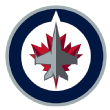
28. Winnipeg Jets
Henry Brzustewicz, D, London (OHL)
The Jets’ prospect pool is really thin on defense, and their scouts have spent a ton of time watching London, so Brzustewicz will be familiar to them.
As the season progressed, Brzustewicz showed offensive instincts with his puck movement and rush activation. There is significant room for offensive growth, and he should be London’s premier defenseman next season. The right-shot blueliner gives the Jets a projectable transition defender with good puck-moving and skating ability who should comfortably fit on the second pair down the road.

The Hurricanes have a profile, and it is drafting prospects with high-end skill and projectable upside. It feels like they’re going to go with one of Ryker Lee or Cullen Potter.
Lee’s statistical profile is slightly better, and he owns elite playmaking, puck skill, a bullet of shot and offensive instincts. His ability to identify quiet areas and release a shot or make a deft play will translate to the NHL. His skating needs to improve to take advantage of those talents, but given that skating is the most easily improvable trait, Lee’s skill package could make him a home run pick.

If Potter is still on the board here, adding the fastest player in the draft would be great value for the Sharks.
While they’d probably prefer to take a defenseman, Potter is too good an asset to pass up for a rebuilding team, and his promising development at the NCAA level could see him become another piece of a highly skilled top six in San Jose. There’s room for some growth for Potter, and given his two-way development, the speedster with an excellent release gives the baby Sharks another offensive player with projectable defensive quality.

Adding a playoff-performing forward with two-way ability and a relentless playing style feels like the perfect Philadelphia Flyer move.
Zonnon has some of the best details in the draft, with excellent forechecking, good defensive instincts and a willingness to get in the dirty areas to win battles. He plays one of the more translatable games of the remaining players, and never cheats for effort.
The Flyers will need players who can fill those roles as they look to contend in the future, and Zonnon has projectable offensive playmaking traits. If he can improve his skating through development of his stride mechanics, there’s a real path to being a fan favorite in the middle six.

If Calgary gets Reschny with their first pick, it is likely they take another center with this pick.
Gastrin has a relatively safe projection as a bottom-six center. He’s more of a play driver than he’s given credit for, and has shown the ability to compete with highly skilled players. He’s a high-floor prospect who showed flashes of more offensive ability than previously thought this season. At a minimum, his instincts and supportive puck play should allow him to become a staple of a checking line that a coach trusts in key situations.


